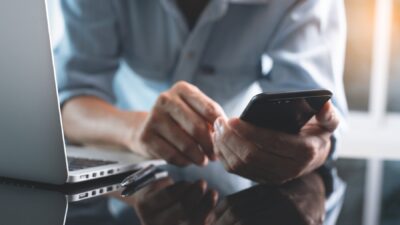How quickly will customers revert to pre-pandemic behaviour?
The COVID-19 pandemic has transformed societies across the world, as governments, businesses and individuals respond to the crisis. Customer behaviour has changed both rapidly and radically, as we adapt to the new circumstances and adopt new ways of living and working (as discussed in a previous Agenda article).
As we look forward to the lifting of certain restrictions in a number of countries, whether or not that be soon, we thought we’d share a few thoughts on how quickly customers will revert to their pre-pandemic behaviour.
A combination of innovation and adoption of new technology means that things are unlikely to ‘go back to normal’ after the pandemic.1 However, there are elements of customer behaviour that—having changed in response to the pandemic—are likely to return afterwards. The question is: How quickly will customers revert to their pre-pandemic behaviour?
Habits, norms and risks
Behavioural economics illustrates that three factors in particular will affect how quickly customers revert to their pre-pandemic behaviour.
- The power of habit and the default option. Customers are more likely to choose the ‘default option’, and naturally conform to their habits.2 The default option may have changed during the pandemic as we have adapted our behaviour (e.g. avoiding public transport), and this may have become a new habit for customers (e.g. working from home).3 The amount of behaviour repetition (a function of the length of the pandemic) will determine the extent to which new habits become reinforced. Less reinforcement of the new habit would mean that the old habit is more likely to return quickly.
- Perceived social norms. Customers are influenced by how other customers behave, observed either in person or through the media.4 If the social norm is perceived to be slow to revert to pre-pandemic behaviour, customers will be slower to revert to their previous behaviour (and vice versa). In other words, the perceived social norm has the power to reinforce a swift or slow return to pre-pandemic behaviour.
- Risks. When it comes to risk, there are two effects that work in opposite directions, depending on whether the most salient perceived risk is catching or spreading COVID-19, or losing the status quo.
- The risk of catching or spreading COVID-19. The perceived probability of an event occurring is influenced by the ease with which instances of the event come to mind—this is known as the availability bias.5 The availability bias explains why the demand for flood insurance peaks just after a flood has occurred, before slowly returning over time to where it was beforehand.6 Therefore pre-pandemic behaviour that is perceived to be ‘low-risk’ is more likely to return quickly. Pre-pandemic behaviour that is perceived to be ‘high-risk’ will return slowly over time, a function of how easily catching or spreading COVID-19 comes to mind. The ease with which this comes to mind will depend on whether there are long-lasting and salient reminders of COVID-19, such as: media coverage; changes in social norms (e.g. wearing face masks); and changes in our environment (e.g. protective screens in shops).7
- The risk of losing the status quo. Preferences are context-dependent, and we place value on not losing what we already have (i.e. we are ‘loss averse’ compared with the reference point of the status quo).8 Loss aversion means that we are more willing to take risks when thinking about losses, than when thinking about gains. We have a greater willingness to take risks in decisions where we are faced with i) a loss, or ii) a reduced loss or no loss at all.9 Therefore, customers may be more likely to undertake ‘high-risk’ behaviour (with regard to catching or spreading COVID-19) if it is perceived to serve the purpose of ‘avoiding losing’ the status quo. However, customers could perceive the status quo to be either pre-pandemic, or during the pandemic.10 If the status quo reference point has been updated to be the second of these, the risk of losing the status quo would not motivate customers to return to pre-pandemic behaviour.11
Other factors will also be relevant—behaviour is context-dependent and will naturally vary by type of customer, culture, sector, and product.12 We also know that network effects make change harder without coordination.13
Coffee or car repairs?
As customer behaviour begins to return to pre-pandemic patterns, the level of demand for different products and services will depend on two key factors.
- Is demand ‘stored up’? Imagine the customer who, on her commute, buys a takeaway coffee every morning. When she returns to the workplace after two months of working from home, she will be unlikely to celebrate by buying 60 takeaway coffees. In other words, her demand for coffee is not ‘stored up’. Imagine the same customer had a car that developed a fault, but she decided against getting it repaired as she did not need to use the car. She is likely to visit a mechanic when she can drive again—her demand for car repair is ‘stored up’ and released. For this reason, mechanics may see the demand for their services temporarily spike above pre-pandemic levels once certain restrictions are lifted.14
- How is demand affected by adverse macroeconomic conditions? Adverse macroeconomic conditions are likely to affect the demand for many goods and services, such as air travel (see here for more). Demand is likely to continue to be affected even after the pandemic has abated (e.g. if COVID-19 leads to a prolonged economic downturn, or if resultant reductions in household income or employment are long-lasting).15
Conclusion
The speed with which customers revert to their pre-pandemic behaviour will be a key factor in determining the impact of COVID-19 on many, if not most, firms. While it depends on context (e.g. type of customer, culture, sector, and product), customers are likely to revert quickly if:
- new habits are not reinforced through repetition over a long period of time, so that old habits return quickly;
- social norms are supportive of a swift return to pre-pandemic behaviour;
- the behaviour is perceived as ‘low-risk’ with regard to catching or spreading COVID-19, and/or ‘high-reward’ with regard to avoiding losing the pre-pandemic status quo.
The level of demand, once it has returned, will depend on whether latent demand has been ‘stored up’, and on macroeconomic conditions more generally.
1 Oxera (2020), ‘Three reasons to be positive’, April.
2 Duhigg, C. (2012), The Power of Habit: Why We Do What We Do in Life and Business, Random House.
3 Oxera (2020), ‘Three reasons to be positive’, April.
4 For example, panic buying behaviour. See Oxera (2020), ‘Why are people panic buying?’, March.
5 Tversky, A. and Kahneman, D. (1974), ‘Judgment under Uncertainty: Heuristics and Biases’, Science, 185:4157, pp. 1124–31.
6 Gallagher, J. (2014), ‘Learning about an Infrequent Event: Evidence from Flood Insurance Take-Up in the United States’, American Economic Journal: Applied Economics, 6:3, pp. 206–33.
7 For more on public health nudges, see Oxera (2020), ‘COVID-19: behavioural economics in the spotlight’, May.
8 Another example showing the importance of reference points can be found in considering why price gouging is viewed as unfair. See Oxera (2020), ‘Why is price gouging seen as unfair?’, March.
9 As opposed to decisions where we are faced with i) a gain, or ii) a reduced gain or no gain at all: Tversky, A. and Kahneman, D. (1979), ‘Prospect Theory: An Analysis of Decision under Risk’, Econometrica, 47:2, pp. 263–92.
10 The frequency and nature of reference point updating is an ongoing field of research. See, for example, Strub, M.S. and Li, D. (2019), ‘Failing to Foresee the Updating of the Reference Point Leads to Time-Inconsistent Investment’, Operations Research, 68:1.
11 Indeed, while noting the power of the status quo bias, some have suggested ways in which ‘a temporary shaking of the status quo is an opportunity to refocus and look at things anew’. See Redelmeier, D.A. and Shafir, E. (2020), ‘Pitfalls of judgment during the COVID-19 pandemic’, The Lancet, April.
12 Oxera (2020), ‘How are Italian consumers reacting to COVID-19?’, April.
13 Oxera (2020), ‘Three reasons to be positive’, April.
14 This will also depend on whether cars are more likely to develop faults when used less than normal, or even left unused. In economic language, the ‘flow’ of demand may temporarily increase after the pandemic (to pre-pandemic levels), while the overall ‘stock’ of demand covering a long period of time (i.e. before, during, and after the pandemic) would not be greater than otherwise.
15 These long-lasting effects are known as ‘hysteresis’ by economists.
Download
Related

The new electronic communications and digital infrastructure regulatory framework: what does the economic evidence say? (Part 2 of 2)
On Thursday 23 October in Brussels, Oxera hosted a roundtable discussion entitled ‘The new electronic communications and digital infrastructure regulatory framework: what does the economic evidence say?’. In the second of a two-part series, we share insights from this productive debate. The discussion took place in the context of an… Read More

The new electronic communications and digital infrastructure regulatory framework: what does the economic evidence say? (Part 1 of 2)
On Thursday 23 October in Brussels, Oxera hosted a roundtable discussion entitled ‘The new electronic communications and digital infrastructure regulatory framework: what does the economic evidence say?’. In the first of a two-part series, we share insights from this productive debate. The discussion took place in the context of an… Read More

